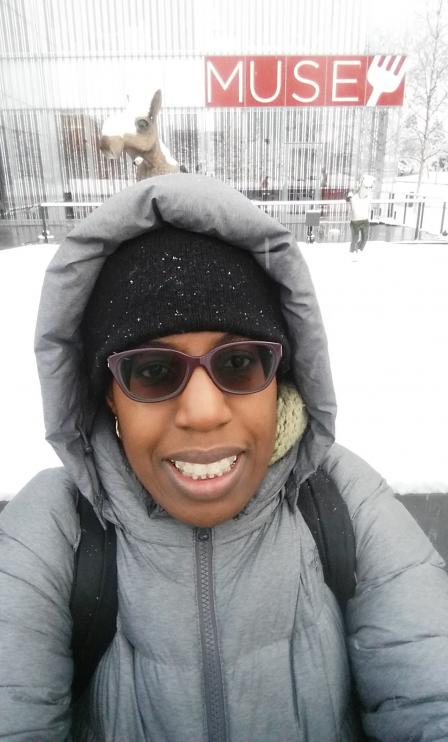Meet EPA Researcher Cynthia McOliver, Ph.D., MPH
 Cynthia at the Alaska Forum on the Environment in Anchorage, Alaska.
Cynthia at the Alaska Forum on the Environment in Anchorage, Alaska.
Cynthia McOliver is a Special Assistant in EPA’s Office of Chemical Safety and Pollution Prevention (OCSPP), Office of Pollution Prevention and Toxics (OPPT), Risk Assessment Division (RAD). She assists with science communications, outreach, project management and technical support for the office’s programs, building coalitions and communications and providing advice to the RAD management team.
When did you first know you wanted to be a scientist?
I initially wanted to be a pediatrician and child health expert with the United Nations. In my last year of college, I took a senior practicum for my biology program in an environmental toxicology laboratory. I thoroughly enjoyed the laboratory setting and our research focused on environmental toxins and neurological effects. I changed my mind about medical school after that experience.
What is your background?
I received a Bachelor of Science degree from the University of Mississippi, a master’s degree in community health from the University of Texas Health Science Center, and a doctoral degree in environmental health science and a certificate in risk sciences and policy from the Johns Hopkins Bloomberg School of Public Health. My doctoral research focused on risks of exposure to waterborne contaminants in the Baltimore waterways for people with compromised immune systems, such as HIV/AIDS patients. Prior to starting the doctoral program, I worked as a licensed sanitarian/Health Inspector with the City of Houston. I conducted food safety inspections at retail food establishments such as taquerias, grocery stores, bars, school cafeterias, restaurants and special events. I learned about the city’s unique and diverse food cultures, helped protect the public from food and waterborne illnesses and enforced food regulations and ordinances.
What do you like most about your research?
I like developing and supporting science and research that matters to American Indian and Alaska Native communities and that supports the development of future scientists, environmentalists, and engaged communities. I enjoy working with my EPA colleagues to ensure that our solicitations are robust and relevant, not only to EPA’s mission, but to the scientific community and the public at large. I also appreciate that our research has public health impacts beyond the immediate communities where the work is undertaken.
How does your science matter?
My science matters because it encompasses protecting and learning about the environment, and fosters education, collaboration, communication, and sharing of scientific knowledge. Our work at EPA creates new scientific growth and discovery and connects diverse communities to each other.
 Cynthia in front of the Anchorage Museum in February 2017.
Cynthia in front of the Anchorage Museum in February 2017.
If you weren’t a scientist, what would you be doing?
I would be a community health educator and youth advocate, and a dedicated writer and architectural/travel photographer. I like to multitask!
What advice would you give a student interested in a career in science?
Be open to learning and exploring. Be aggressive with your dreams and goals. Ask questions and seek guidance from people you wish to emulate. Read a lot!
If you can have any superpower, what would you choose?
I would be able to communicate in any language the beauty and preciousness of nature and the need to protect and sustain these resources.
What do you think the coolest scientific discovery was and why?
I am fascinated by how human beings (whether it be traditional healers, folk doctors, pharmacologists, or toxicologists) have gained understanding and appreciation of nature as a source of various treatments, remedies, and medicines.
If you could have dinner with any scientist, past or present, who would you choose?
Although not a scientist in the typical sense, I would love to have dinner with Wangari Maathai, a Kenyan environmental advocate, doctor, and founder of the Green Belt Movement.
Editor's Note: The opinions expressed herein are those of the researcher alone. EPA does not endorse the opinions or positions expressed.
